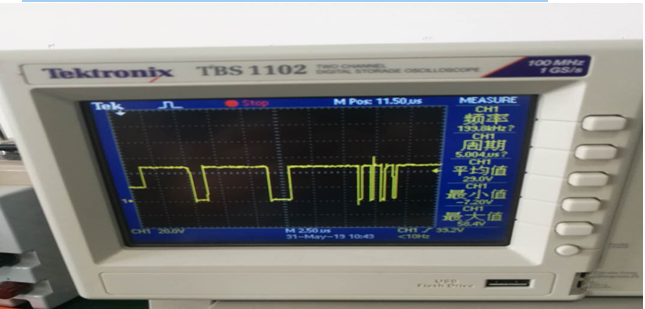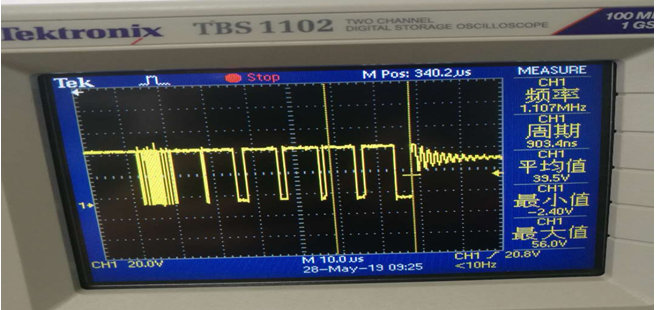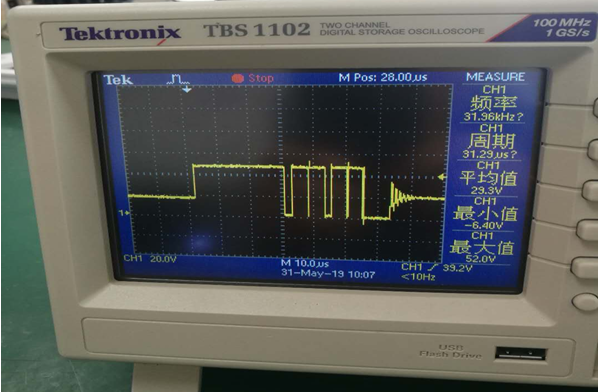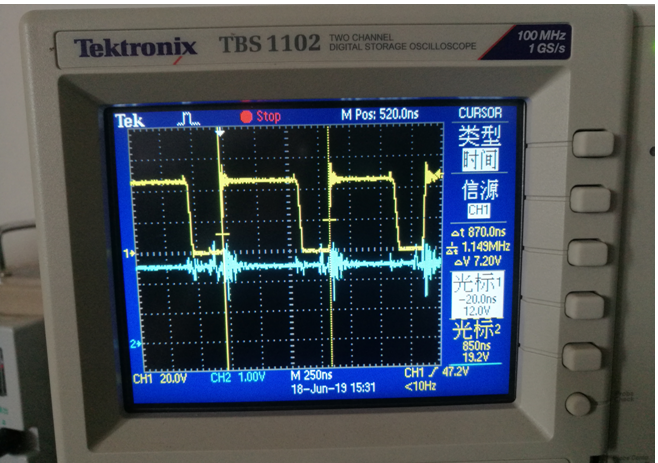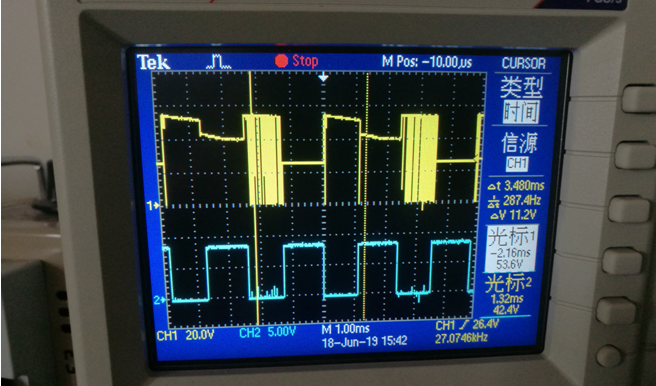Hi Sir
we use TPS92641 as Vin=24V, Vout=13.1V ,Iout=11A meet same questions, the SCH as attachment; pls help check it,tks!
1.The following figure is the waveform diagram of the SW pin of the chip. There will be oscillation at the front end/end. What causes it?
2. During the dimming process, the chip found that the lamp bead flashed. It was found that the PWM was at that point and the PWM duty cycle increased. However, the duty cycle value of the HG pin output was reduced. The output current is suddenly small, and the lamp bead flashes. In turn, the PWM will have a point from 100% to 0%. As the PWM decreases, the duty value of the HG pin output increases. At this point, the light will flash again. I will send a video as attachment,pls check it
3.The debugging found that when the inductance is determined, the switching frequency is increased, this phenomenon will occur, the switching frequency will be lowered, and the waveform will be normal. What is the cause?


